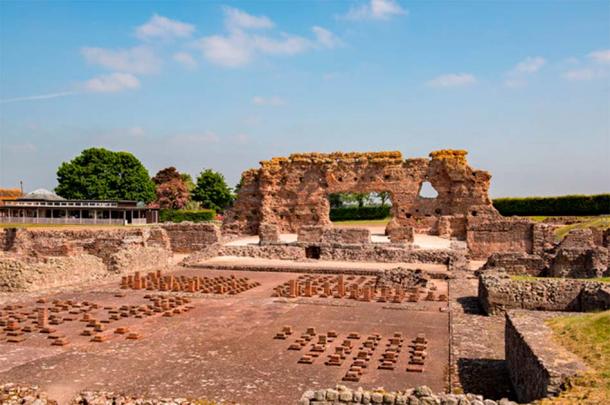Caesars Loved Tweezers! Plucking Romans Were Obsessed With Hair Removal
More than 50 pairs of tweezers have been found at one of Roman Britain’s largest settlements, providing a link into the deep-rooted history of hair removal practices! Wroxeter City Shropshire is the place of this discovery, and the unveiling of some 400 plus items, most of which have never publicly been displayed, happened at the opening of a fascinating new museum in the Roman city.
Vanity and Plucking: A Public and Private Obsession
These archaeological treasures offers invaluable insights into the grooming rituals and beauty ideals of Roman men and women. Beyond mere vanity, these practices were intrinsic to the Romans' pursuit of cleanliness and impeccable public image, dominating a significant part of their daily lives, reports the charity English Heritage in a press release.
- 10 Shocking Facts about the Ancient Romans
- Marcus Junius Brutus the Younger: Ultimate Betrayer or a Hero of the Roman Empire?

Curator examining a pair of Roman tweezers from Wroxeter City. (English Heritage)
This is food for thought the next time we are removing our armpit or pubis hair, knowing the obsession for shorn hair and smooth skin emanates from ancient times. An obsession that transgressed across socio-economic boundaries in the Italian peninsula, as the rich and poor were both obsessed with grooming.
Julius Caesar reportedly had “superfluous hair” plucked from his body, according to a study published in 2014. Ordinary citizens, too, would have been familiar with hair removers, in addition to other cosmetic products, according to another study. This obsession was not just restricted to the peninsula however, and traversed all the way across to Roman Britain as well.
- A Succinct Timeline of Roman Emperors—400 Years of Power Condensed
- The Real Lives of Roman Gladiators
Tweezers and Hair Removal in Roman Times
Cameron Moffett, English Heritage Curator at Wroxeter Roman City, said:
“At Wroxeter alone we have discovered over 50 pairs of tweezers, one of the largest collections of this item in Britain, indicating that it was a popular accessory! The advantage of the tweezer was that it was safe, simple and cheap, but unfortunately not pain free. It may come as a surprise to some that in Roman Britain the removal of body hair was as common with men as it was with women.”
He further explained that sports like wrestling had a social expectation that believed that men wearing minimal clothing had to remove all visible body hair. Fortunately, modern hair removal methods are much less painful and excruciating, even though the interest has only been resurrected in the last century or so.
For the Romans, achieving physical perfection came at a price. Their unwavering dedication to communal bathing saw them frequent the baths on a daily basis. As symbols of status and sophistication, many Romans even possessed their personal grooming sets, equipped with an array of tools designed to enhance their appearance. Among these implements were tweezers, commonly associated with eyebrow shaping in the present day, reports The Guardian.
In ancient Rome, tweezers served a broader purpose—they were employed to remove all undesirable body hair. Emulating Roman fashions and distancing themselves from the "barbarians," Roman Britons favored a clean-shaven look. Sadly, this meant enduring the painful and often excruciatingly performed hair-plucking procedure, typically carried out by slaves.
The discomfort caused was so severe that Roman author and politician Seneca once penned a letter to a friend, lamenting the constant commotion in the public baths:
“the skinny armpit hair-plucker whose cries are shrill, so as to draw people's attention, and never stop, except when he is doing his job and making someone else shriek for him.”

Wroxeter Roman City, England, established 90 AD. (The Carlisle Kid/CC BY-SA 2.0)
Wroxeter Roman City: A Deep Dive into the Roman Briton Past
Located in the heart of Shropshire, Wroxeter Roman City, also known as Viriconium Cornoviorum, stands as an exceptionally preserved testament to Roman civilization in Britain. Excavations of this site have unveiled an array of monumental structures that formed the backbone of this bustling Roman town.
The forum, a center for governance and legislation, played a pivotal role in shaping the community. The market, or macellum, catered to the needs of shoppers seeking exotic goods. Acting as a multifaceted hub, the bath-house basilica served as a center for education, socialization, commerce, and administrative affairs.
The bathhouse itself, a focal point of Roman culture, provided an avenue for both hygiene and recreation. Lastly, the town houses, numbering over one hundred, stand as a testament to the affluence of Wroxeter's residents, reports The Daily Mail.
Apart from the visibly exemplar hygiene standards set by Roman Britannia, the museum visitors will have a lot to see. This includes figurines representing revered deities, Roman water pipes that once supplied the bathhouse, nail cleaners, ear scoops, delicate glass bottles for perfumes and bath oils, and copper alloy cosmetic sets used for applying eye liner and shadows.
Top image: Roman soldier with hairless body, now found to be achieved using tweezers. Source: Gabi Moisa/Adobe Stock
By Sahir Pandey
References
Brown, M. 2023. Romans, lend me your shears: empire brought hair removal to Britain, says English Heritage. Available at: https://www.theguardian.com/uk-news/2023/may/24/body-hair-removal-what-romans-did-for-us-english-heritage.
Kayra, O. 2023. More than 50 pairs of tweezers found during an excavation of a 2,000-year-old Roman settlement – Romans to blame for no-body-hair trend. Available at: https://arkeonews.net/more-than-50-pairs-of-tweezers-found-during-a-major-excavation-of-a-2000-year-old-roman-settlement-romans-to-blame-for-no-body-hair-trend/.
Prosser, E.J. 2023. It's Julius TWEEZER! Archaeologists unearth beauty sets used by the Romans to rip out their body hair during excavation of 2,000-year-old settlement. Available at: https://www.dailymail.co.uk/news/article-12141851/Archaeologists-unearth-50-pairs-tweezers-excavation-2000-year-old-settlement.html.

















